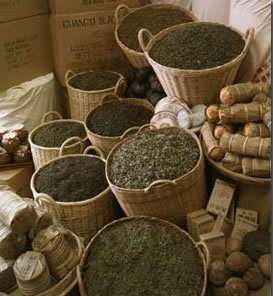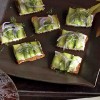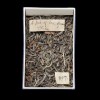
There are two main process methods for tea: Orthodox and CTC.
Orthodox Tea Production
This method is done by hand. Once the leaves have been picked and withered (where the excess surface moisture is removed), it goes to the rolling process; this where the workers manipulate the leaves by hand by loosely squeezing, wringing, rolling, and pressing piles, bunches, and mounds of tea leaves. This only internally breaks the leaves’ cell walls to move the juices around to promote enzyme activity that starts the oxidation process. (Note: there are now machines that mimic this process, especially if the tea is a “Broken” leaf grade.) Now the leaves move to the roll-breaking and sifting stage, where the leaves are cooled, the workers make sure that they leave do not become clumped with the juices that are now coating the leaves; this helps ensure an even coating of enzyme juices on the leaves so that the best possible oxidation can occur. Now the main oxidation process can begin! This process requires a lot of moist and oxygen rich air, were experts with years, and sometimes generations, of experience keep a close eyes and noses on the tea leaves. They rake and move the leaves to varying thicknesses, and locations of the room to ensure the contact with the air is even and ideal. The master can adjust eh flavor by adjusting the time and humidity/temperature of the room, and only when the master is satisfied, the tea is moved to the drying and cooling stage. The purpose of drying the leaf with hot air is to stop the oxidation process (aka the enzymatic activity), and to reduce the moisture content; this process also caramelizes the natural sugars that are in the tea leaves. The drying process can be done many ways: pans or baskets over open fire/charcoal, hot air blowers, various dryers like drum dryers, tumble dryers, bed dryers, chain dryers (where the leaves are vertically tumbled down from level to level of the factory with increasing heats at each level). The leaves are then very quickly cooled to prevent the loss of flavor, and sorted to be sent to the packaging area of the factory/building.
Some examples of Orthodox black teas are…
China-Pu-erh Classic (100% organic)
Ceylon- Venture Estate (100% organic)
CTC (Stands for “cut-tear-curl.”)
This is a process that uses machines to process the tea leaves. After the withering, the leaves are chopped and shredded with very sharp blades, then rolled by four or five rollers that again have more blades on them that rotate at different speeds and directions. After the leaf chutney has gone through the rollers it can be placed into a sixteen foot long cylindrical CTC drum for oxidation (kind of like a dryer for your laundry but bigger), or, if the humidity is too high, the other way of oxidizing is by having the leaf chutney on conveyer belts that run under UV lamps, then it goes through roll-ball breaking to break up the clumps. The tea is then cooled, so as to not los3e flavor, and then sorted for packaging.
Try our CTC black teas and tell us what you think…
CTC versus orthodox tea can make a bug difference and is a huge deal to some tea drinkers, but not matter what, tea is still awesome for it’s versatility!






Pingback: Buy viagra canada
Pingback: buy generic cialis
Pingback: where to buy cialis